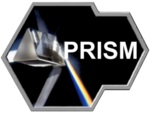Ubuntu 12.04 vs. Windows 8: The Battle for Desktop Supremacy


Expected to be unleashed in autumn of 2012, Windows 8, Microsoft’s latest gamble in the desktop market is making millions of eyes turn even before its release. Loaded with a brand new yet somewhat contentious Metro interface, the touch-friendly desktop will not only be seen on laptops and PCs, but will also find its place in the swanky upcoming tablet computers.
That said, the main target group for Redmond would be the desktop, a field that they've been dominating for decades. Windows 8 will aim to obliterate all the competition by giving users an interface that will look and behave the same way across all devices. Sadly for them, and quite obviously too, Metro isn't the first to try out this unified concept. Our very own Ubuntu has been busy for a couple of years trying to polish Unity, its unified interface for computers, tablets, smartphones. Some even go as far as to say that Microsoft might have actually ‘borrowed’ that idea from its old penguinian buddy.
-

- Login or register to post comments
 Printer-friendly version
Printer-friendly version- 3863 reads
 PDF version
PDF version
More in Tux Machines
- Highlights
- Front Page
- Latest Headlines
- Archive
- Recent comments
- All-Time Popular Stories
- Hot Topics
- New Members
digiKam 7.7.0 is released
After three months of active maintenance and another bug triage, the digiKam team is proud to present version 7.7.0 of its open source digital photo manager. See below the list of most important features coming with this release.
|
Dilution and Misuse of the "Linux" Brand
|
Samsung, Red Hat to Work on Linux Drivers for Future Tech
The metaverse is expected to uproot system design as we know it, and Samsung is one of many hardware vendors re-imagining data center infrastructure in preparation for a parallel 3D world.
Samsung is working on new memory technologies that provide faster bandwidth inside hardware for data to travel between CPUs, storage and other computing resources. The company also announced it was partnering with Red Hat to ensure these technologies have Linux compatibility.
|
today's howtos
|









.svg_.png)
 Content (where original) is available under CC-BY-SA, copyrighted by original author/s.
Content (where original) is available under CC-BY-SA, copyrighted by original author/s.

Recent comments
1 year 11 weeks ago
1 year 11 weeks ago
1 year 11 weeks ago
1 year 11 weeks ago
1 year 11 weeks ago
1 year 11 weeks ago
1 year 11 weeks ago
1 year 11 weeks ago
1 year 11 weeks ago
1 year 11 weeks ago